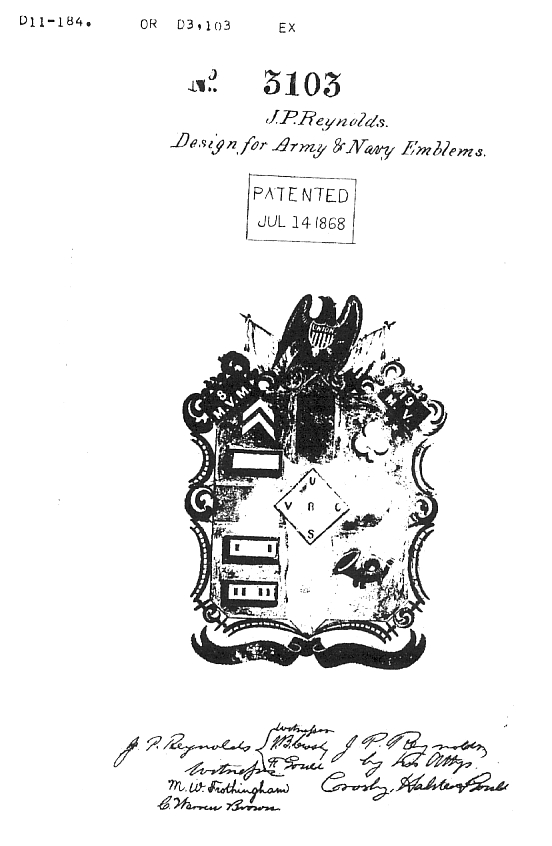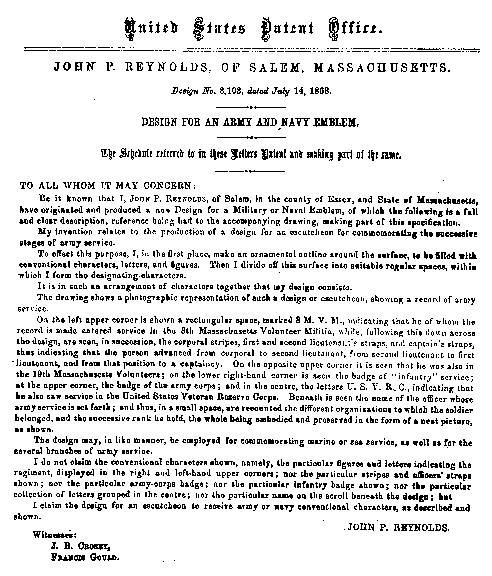

United States Patent Office
John P. Reynolds, of Salem, Massachusetts.
Design no 3,103, dated July 14, 1868.
Design for an Army and Navy Emblem.
The Schedule referred to in these Letters Patent and making part of the same.
To All Whom It May Concern:
Be it known that I, John P. Reynolds, of Salem, in the country of Essex, and State of Massachusetts, have originated and produced a new Design for a Military or Naval Emblem, of which the following is a full and clear description, reference being had to the accompanying drawing, making part of this specification.
My invention relates to the production of a design for an escutcheon for commemorating the successive stages of army service.
To effect this purpose, I, in the first place, make an ornamental outline around the surface, to be filled with conventional characters, letters, and figures. Then I divide off this surface into suitable regular spaces, within which I form the designating characters.
It is in such an arrangement of characters together that my design consists.
The drawing shows a photographic representation of such a design or escutcheon, showing a record of army service.
On the left upper corner is shown a rectangular space, marked 8 M.V.M., indicating that he of whom the record is made entered service in the 8th Massachusetts Volunteer Militia, while, following this down across the design, are seen, in succession, the corporal stripes, first and second lieutenant's straps, and captain's straps, thus indicating that the person advanced from corporal to second lieutenant, from second lieutenant to first lieutenant, and from that position to a captaincy. On the opposite upper corner it is seen that he was also in the 19th Massachusetts Volunteers; on the lower right-hand corner is seen the badge of "infantry" service; at the upper corner, the badge of the army corps; and in the centre, the letters U.S.V.R.C., indicating that he also saw service in the United States Veteran Reserve Corps. Beneath is seen the name of the officer whose army service is set forth; and thus, in a small space, are recounted the different organizations to which the soldier belonged, and the successive rank he held, the whole being embodied and preserved in the form of a neat picture, as shown.
The design may, in like manner, be employed for commemorating marine or sea service, as well as for the several branches of army service.
I do not claim the conventional characters shown, namely, the particular figures and letters indication the regiment, displaying in the right and left-hand upper corners; nor the particular army-corps badge; nor the particular infantry badge shown; nor the particular collection of letters grouped in the centre; nor the particular name on the scroll beneath the design; but
I claim the design for an escutcheon to receive army or navy conventional characters, as described and shown.
John P. Reynolds
Witnesses:
J.B. Crosby,
Francis Gould
